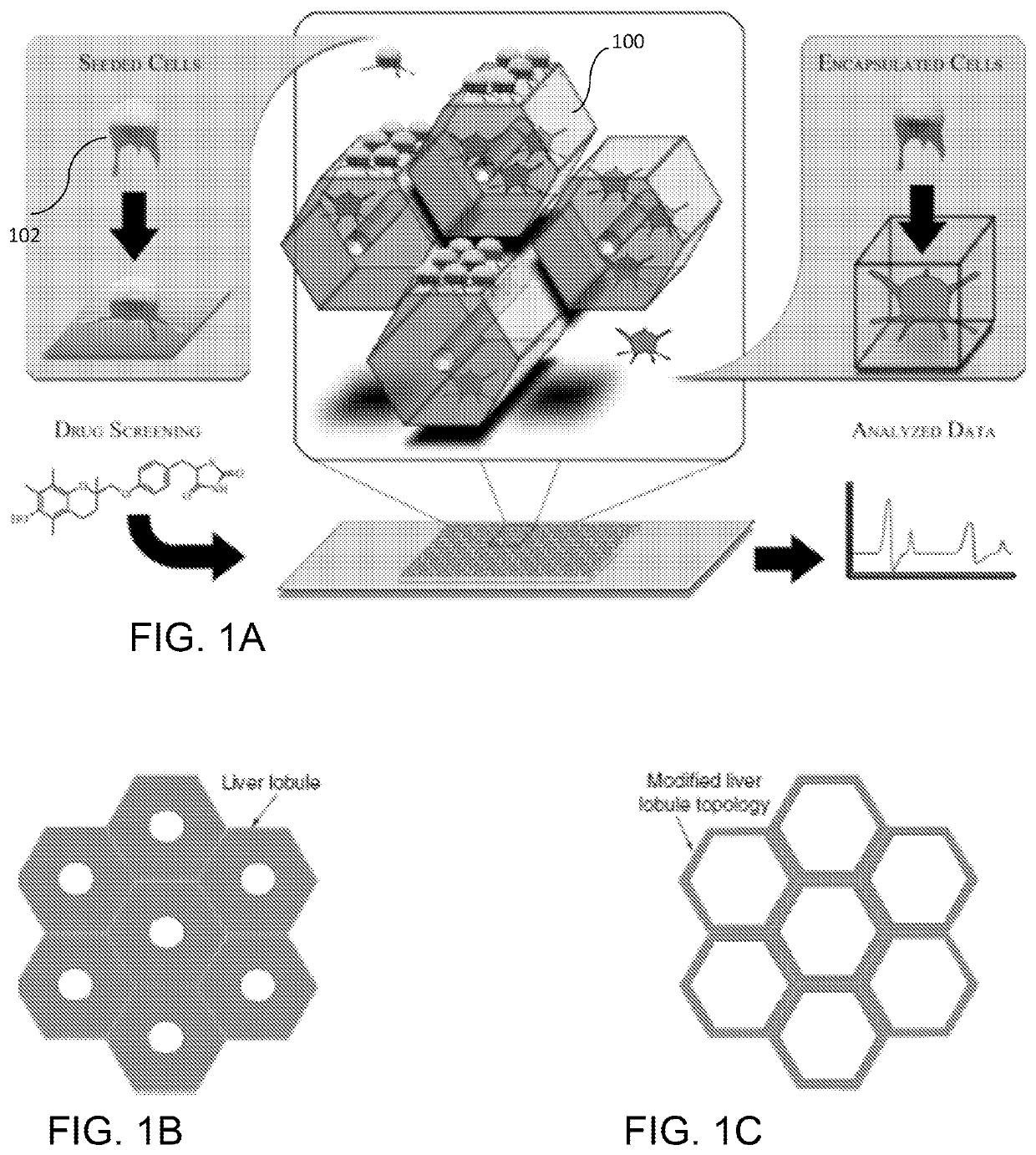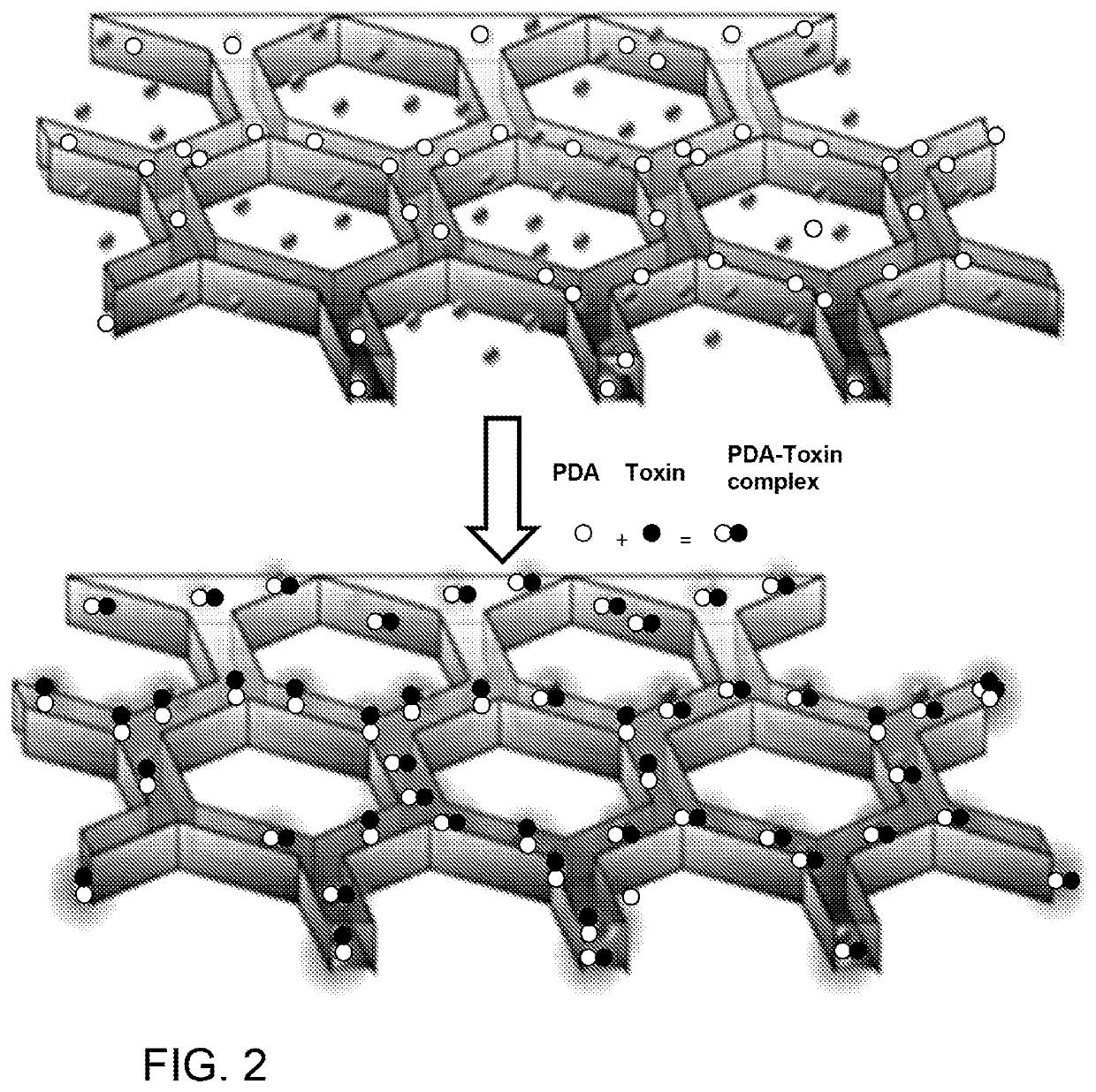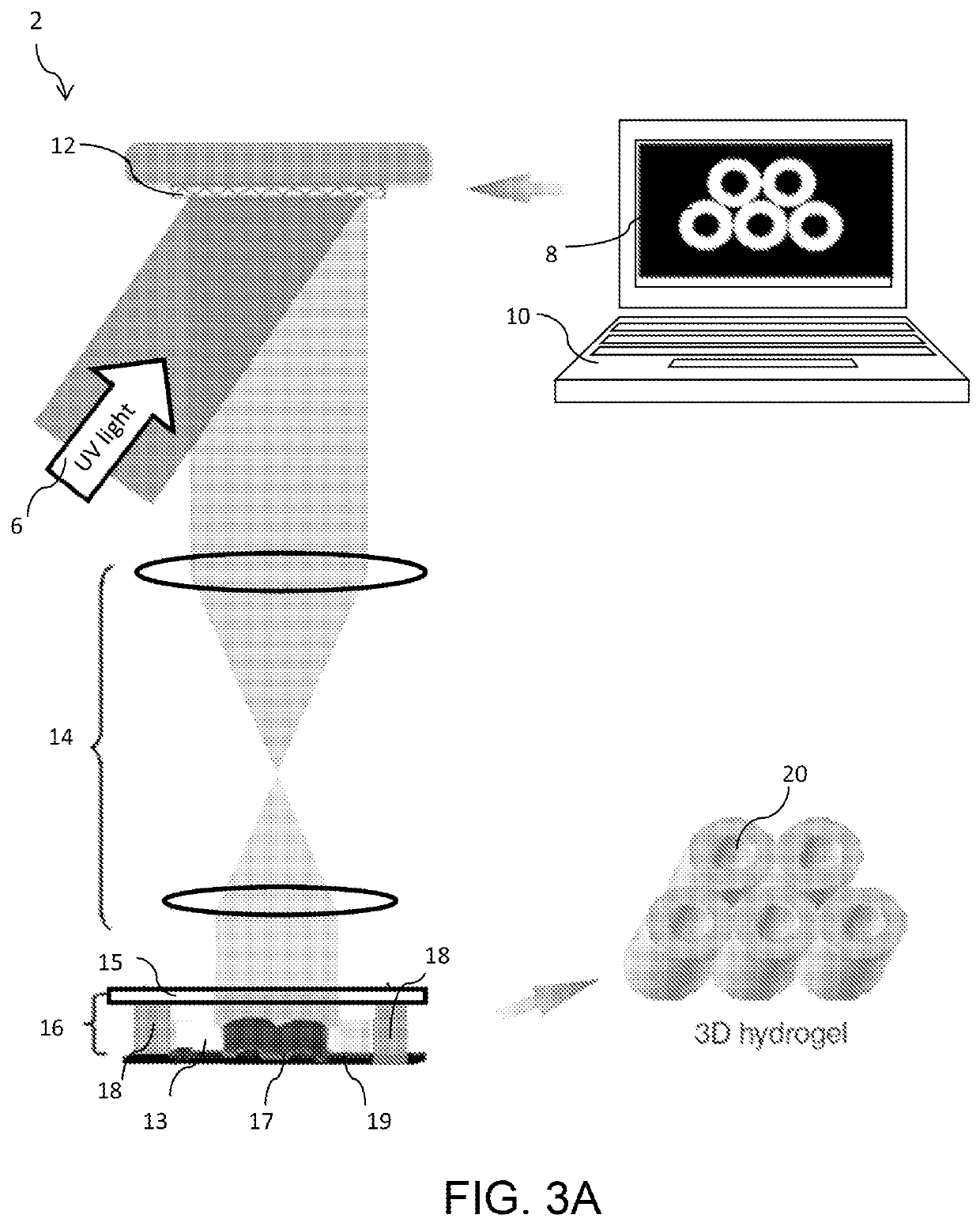Liver-mimetic device and method for simulation of hepatic function using such device
a liver-mimetic device and liver-mimetic technology, which is applied in the field of liver-mimetic devices and methods for simulation of hepatic functions using such devices, can solve the problems of difficult to translate human studies, costing the traditional animal model, and affecting the success of drug development, and achieves rapid and scalable fabrication of highly-specified biomimetic structures
- Summary
- Abstract
- Description
- Claims
- Application Information
AI Technical Summary
Benefits of technology
Problems solved by technology
Method used
Image
Examples
example 1
Evaluation of Hepatic Maturation and Function
[0060]The maturation and function of HPCs in the 3D scaffold can be systematically evaluated by commonly-used assays. The gene expression of ALB, HNF 4α, G6D, and MRP 2 are assessed by real time PCR at days 3, 7, 21 and 30. Albumin secretion and urea synthesis may also be monitored at the same time points to further confirm hepatic maturation. ELISA is used to quantify the albumin secretion at each time point. Commercially available kits (Sigma-Aldrich, Inc.) can be used to measure the urea concentration in the culture at the same time points.
[0061]After confirming hepatic maturation, further tests on hepatic function may be performed. Gluconeogenesis can be probed using periodic-acid Schiff (PAS) staining. Cytochrome P450 enzymatic activity, which plays an important role in detoxification processes, can be determined via P450-Glo™ CYP450 Assays (Promega). Formation of bile canaliculi is characterized as well at day 7, 21 and 30. After th...
example 2
Optimization of Co-culture Conditions
[0063]The liver consists of multiple cell types, such as hepatocytes, endothelial cells, and fibroblasts, working together to provide hepatic functionality. For hepatic cultures in vitro, it has been widely recognized that co-cultures with other supportive cells, e.g., endothelial cells, fibroblasts, and MSCs, can significantly stabilize hepatic phenotype and function. In order to achieve the most successful co-culture system, optimization of culture conditions (e.g., combination of culture media) should be performed both in 2D and 3D contexts prior to incorporating cells within the complex 3D scaffold. In prior studies and preliminary tests, co-cultures of MSCs and endothelial cells with hepatocytes are well supported in hepatic media.
[0064]Vascularization is vitally important for tissues with highly active metabolism, such as the heart and liver due to their intensive demand of oxygen and nutrient supply as well as waste disposal. By incorporat...
PUM
| Property | Measurement | Unit |
|---|---|---|
| time | aaaaa | aaaaa |
| concentrations | aaaaa | aaaaa |
| concentrations | aaaaa | aaaaa |
Abstract
Description
Claims
Application Information
 Login to View More
Login to View More - R&D
- Intellectual Property
- Life Sciences
- Materials
- Tech Scout
- Unparalleled Data Quality
- Higher Quality Content
- 60% Fewer Hallucinations
Browse by: Latest US Patents, China's latest patents, Technical Efficacy Thesaurus, Application Domain, Technology Topic, Popular Technical Reports.
© 2025 PatSnap. All rights reserved.Legal|Privacy policy|Modern Slavery Act Transparency Statement|Sitemap|About US| Contact US: help@patsnap.com



